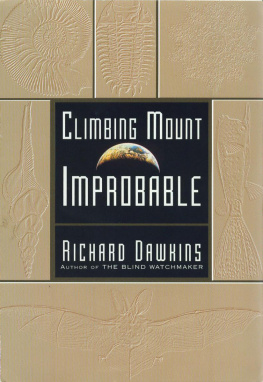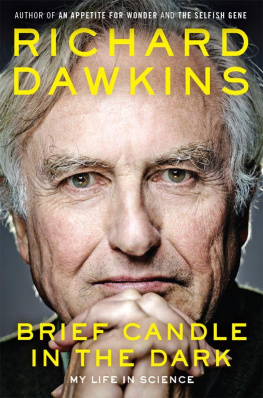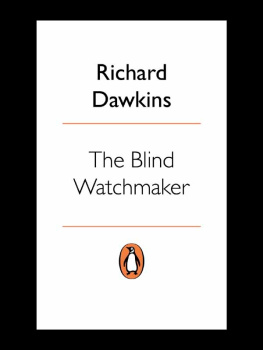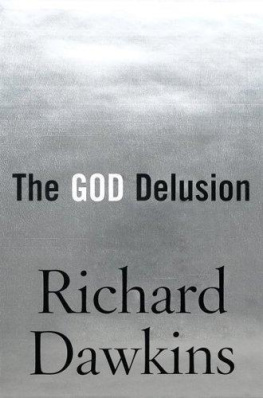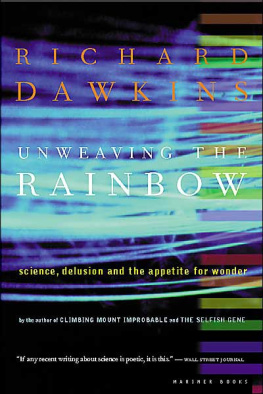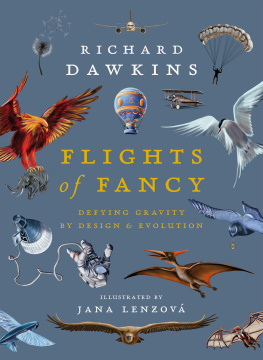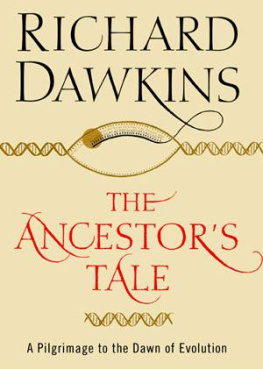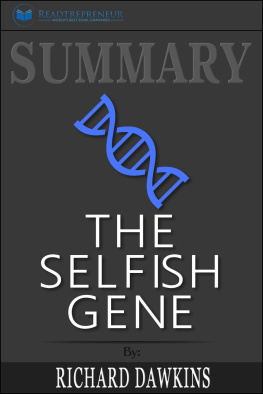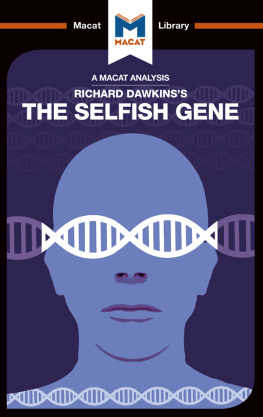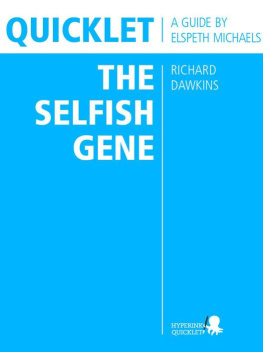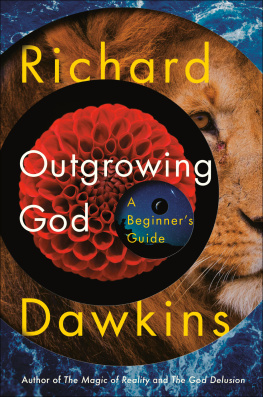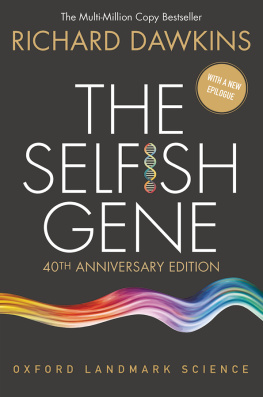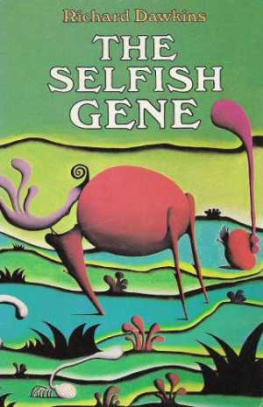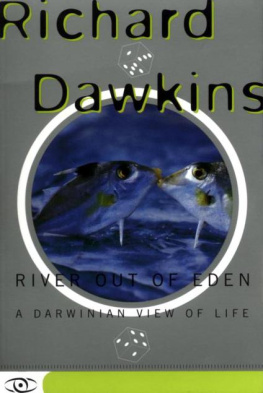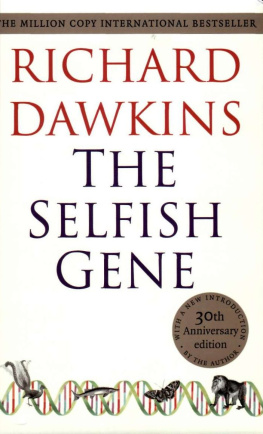W. W. Norton & Company New York London
W. W. Norton & Company, Inc.
500 Fifth Avenue, New York, N.Y. 10110
www.wwnorton.com
W. W. Norton & Company Ltd.
Castle House, 75/76 Wells Street, London WIT 3QT
A cknowledgements
THIS BOOK GREW OUT OF MY R OYAL I NSTITUTION Christmas Lectures, televised by the BBC under the general title Growing Up in the Universe . I have had to abandon that title because at least three other books have since appeared with almost identical names. Moreover, my book itself has grown up and changed, so it is no longer fair to call it the book of the Christmas Lectures. Nevertheless I should like to thank the Director of the Royal Institution for honouring me with the invitation to join the historic lineage of Christmas Lecturers going all the way back to Michael Faraday. Bryson Gore of the Royal Institution, together with William Woollard and Richard Melman of Inca Television, influenced the lectures greatly, and traces of their influence will still be found in this greatly transformed and enlarged book.
Michael Rodgers read and constructively criticized early drafts of more chapters than are here printed, and advised decisively on the reconstruction of the whole book. Fritz Vollrath and Peter Fuchs gave expert readings of Chapter 2, while Michael Land and Dan Nilsson did the same for Chapter 5. All four of these experts gave generously of their knowledge when I tapped it. Mark Ridley, Matt Ridley, Charles Simonyi and Lalla Ward Dawkins read the whole book in a late draft and provided helpful criticism and reassuring encouragement in needful proportions. Mary Cunnane of W. W. Norton and Ravi Mirchandani of Viking Penguin showed generous tolerance and big-hearted judgement as the book grew, took on a life of its own and finally shrank again to more manageable scope. John Brockman lurked encouragingly in the background, never interfering but always ready with support. Computer experts are heroes, too often unsung. In this book I have used the programs of Peter Fuchs, Thiemo Krink and Sam Zschokke. Ted Kaehler collaborated with me in conceiving and writing the difficult Arthromorphs program. In my own suite of watchmaker programs I have frequently benefited from the advice and help of Alan Grafen and Alun ap Rhisiart. The staff of the Zoological and Entomological Collections of the University Museum at Oxford lent specimens and expert advice. Josine Meijer was a willing and resourceful picture researcher. My wife, Lalla Ward Dawkins, did the drawings (though not the layouts) and her love of Darwinian Creation shines through every one of them.
I should like to thank Charles Simonyi, not only for his immense generosity in endowing the post in Public Understanding of Science which I now hold at Oxford, but also for articulating his visionwhich coincides with mineof the craft of explaining science to a large audience. Do not talk down. Try to inspire everybody with the poetry of science and make your explanations as easy as honesty allows, but at the same time do not neglect the difficult. Put extra effort into explaining to those readers prepared to put matching effort into understanding.
P icture Acknowledgements
Drawings by Lalla Ward: 1.7, 1.9, 1.10, 1.13, 1.14, 2.9, 3.1, 3.3, 4.2, 4.3, 4.4, 4.5, 4.6, 4.7, 5.1, 5.15, 6.3, 6.4, 6.10, 6.13, 6.15, 7.3, 7.8, 7.15a, 7.16, 8.2, 8.3, 8.6; 1.2 (after Hlldobler and Wilson); 1.3 (after Wilson); 1.11 (after Eberhard); 2.6 (after Bristowe); 5.30 (after M. F. Land); 7.10 (after Brusca and Brusca); 7.11 (after Collins Guide to Insects ); 7.17 (after Brusca and Brusca); 10.6 (after Heijn from Ulenberg).
Computer-generated images by the author: 1.14, 1.15, 1.16, 5.3*, 5.5*, 5.6*, 5.7*, 5.9*, 5.10*, 5.11*, 5.12, 5.20*, 5.28, 6.2*, 6.3*, 6.5, 6.6, 6.8, 6.11, 6.12, 6.14, 7.1, 7.9, 7.12, 7.13, 7.14 (images marked with an asterisk redrawn by Nigel Andrews); by Jeremy Hopes 5.13.
Heather Angel: 1.5, 1.11b, 5.21, 8.1. Ardea: 1.8 (Hans D. Dossenbach), 1.11a (Tony Beamish), 6.7 (P. Morris), 9.3e (Bob Gibbons). Euan N. K. Clarkson: 5.28. Bruce Coleman: 10.3a (Gerald Cubitt). W. D. Hamilton: 10.1, 10.2, 10.4, 10.5, 10.7. Ole Munk: 5.31. NHPA: 6.1 (James Carmichael Jr). Chris OToole: 1.6a and b. Oxford Scientific Films: 1.4 (Rudie Kuiter), 2.1 (Densey Clyne), 5.19 (Michael Leach), 5.19b (J. A. L. Cooke), 10.2b (K. Jell), 10.3b (David Cayless). Portech Mobile Robotics Laboratory, Portsmouth: 9.2. Prema Photos: 8.5 (K. G. PrestonMafham). David M. Raup: 6.9. Science Photo Library: 9.3a (A. B. Dowsett), 9.3b (John Bavosi), 9.3c (Manfred Kage), 9.3d (David Patterson), 9.6 (J. C. Revy). Dr Fritz Vollrath: 2.2, 2.3, 2.4, 2.10, 2.11, 2.12, 2.13. Zefa: 9.1.
1.1 from Michell, J. (1978) Simulacra . London: Thames and Hudson.
2.5 from Hansell (1984).
2.7 and 2.8 from Robinson (1991).
2.14 and 2.15 from Terzopoulos et al. (1995) 1995 by the Massachusetts Institute of Technology.
3.2 courtesy of the Hamilton Spectator , Canada.
4.1 courtesy of J. T. Bonner 1965, Princeton University Press.
5.2 from Dawkins (1986) (drawing by Bridget Peace).
5.4a, b and d, 5.8a-e, 5.24a and b from Land (1980) (redrawn from Hesse, 1899).
5.4c from Salvini-Plawen and Mayr (1977) (after Hesse, 1899).
5.16a and b Hesse from Untersuchungen, ber die organe der Lichtempfindung bei niederen thieren, Zeitschrift fr Wissenschaftliche Zoologie , 1899.
5.17, 5.19d and e, 5.25, 5.26 courtesy of M. F. Land.
5.18a and f, 5.27, 5.30 drawings by Nigel Andrews.
5.22 drawing by Kuno Kirschfeld, reproduced by permission of Naturwissenschaftliche Rundschau, Stuttgart.
5.23 courtesy of Dan E. Nilsson from Stavenga and Hardie (eds.) (1989).
5.29a-e courtesy of Walter J. Gehring et al. , from Georg Halder et al. (1995).
6.16 from Meinhardt (1995).
7.2, 7.4, 7.5, 7.6, 7.7 from Ernst Haeckel (1904) Kunstformen der Natur . Leipzig and Vienna: Verlag des Bibliographischen Instituts.
7.15b from Raff and Kaufman (1983) (after Y. Tanaka, Genetics of the Silkworm, in Advances in Genetics 5: 239317, 1953).
8.4 from Wilson (1971) (from Wheeler, 1910, after F. Dahl).
9.4 Jean Dawkins.
9.5 K. Eric Drexler, Chris Peterson and Gayle Pergamit. All rights reserved. Reprinted with permission from Unbounding the Future: The Nanotechnology Revolution . William Morrow, 1991.

